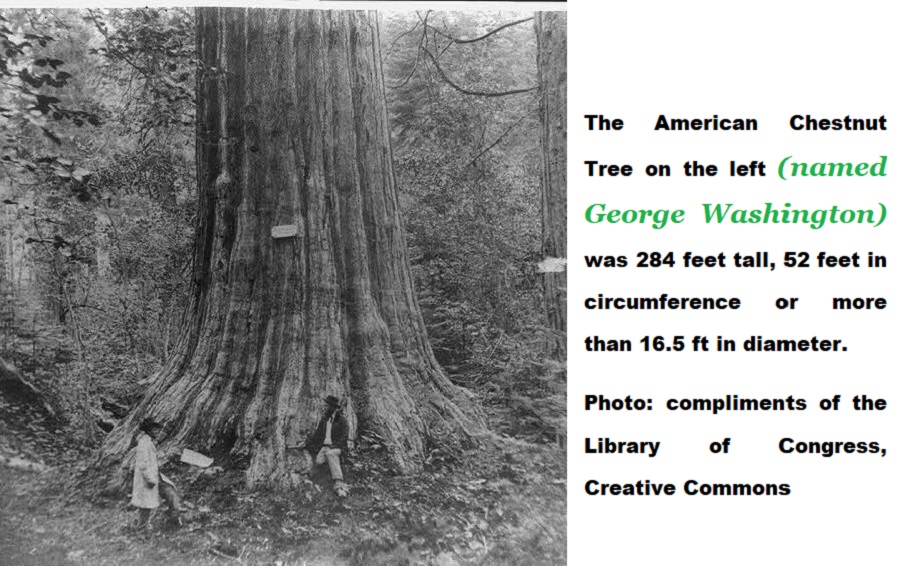“Summer Snow”

Have you ever seen a producing American Chestnut tree? Probably not, sorry, you only missed them by a few decades. Still, at one time, the American Chestnut Tree filled America’s eastern forests and supported a variety of life forms (human and otherwise). However, a devastating fungus disease which became known as the “chestnut blight” was accidentally introduced into the U S by the planting of an Asian chestnut tree (it had developed immunity to the disease) in New York City’s Central Park near the beginning of the 20th century. As a result, by 1950 the chestnut blight had killed practically every mature American Chestnut tree on the continent.
The American Chestnut tree was a very reliable and productive tree; unaffected by seasonal frosts, it was the single most important food source for a wide variety of life forms, including humans, bears, elk, deer, blue jays and turkeys. Rural areas depended upon the annual nut harvest as a cash crop and for feeding livestock. The tree typically bloomed in June or early July with a milky white blossom display that was often referred to as “summer snow” because of the carpet of flowering blossoms laden upon the mountain tops.
The chestnut lumber industry was a major sector of rural economies as well. Chestnut wood is straight-grained and easily worked, lightweight and highly rot-resistant; making it ideal for fence posts, railroad ties, barn beams, and for constructing houses. The bark was even used in leather tanneries. The American Chestnut tree was therefore often called “the perfect tree”.
In times past, magnificent American Chestnut trees dominated the forested hills and mountains over much of the eastern U. S., from the south of Maine to the northern sections of Louisiana, Alabama, and Georgia. Some grew up to 100 feet tall and often had diameters exceeding 10 feet.

Occasionally a current day woodsman or hiker may come upon a young Chestnut tree growing in the wild. The source is none other than the root system of an old tree that is no longer living above ground. You see, the blight only infected and killed that part of the tree that was above the surface of the earth, regrettably such anomalies don’t live long (10-15 years), so if you see one, don’t get too excited about the trees apparent “comeback”.
Thus far you’ve read a lot of bad news in regard to the American Chestnut tree, so, now the good news: There is (after years of research) good promise for the development of an American Chestnut tree that is immune to the dreaded “chestnut blight”!
For years, there have been ongoing efforts to restore the great American Chestnut Tree!
Click the Video Button below for in-depth information all the way through 2024:
FYI Update:
You can now purchase hybrid American Chestnut Trees for planting in the spring of 2025 (the ideal time to plant a Hybrid Chestnut Tree is during the dormant season, typically from late October to early April). However, for proper ‘nut’ producing, plant two cultivars or plants of the same species to insure high producing trees, otherwise you are sure to be disappointed.
In ideal conditions (full sun in well drained sand-based soil) these trees can grow 4 to 7 feet in a single year, reach a total height of 80 to 100, and began producing nuts during the 3rd or 4th season.
Though both male and female flowers can be produced by a single tree, they need another American Chestnut Tree near-by for good cross pollination and nut production.
While you’re here why not checkout the Two-Part YouTube Video on restoring the American Chestnut Tree, just Click the Button right down there ↓
Sources:
http://en.wikipedia.org/wiki/Chestnut_blight
http://www.acf.org/range_close.php
http://www.srs.fs.usda.gov/compass/issue11/06where.htm
http://abcnews.go.com/Technology/story?id=99304&page=1
http://www.acf.org/range_close.php
http://brueckner-rhododendron-gardens.blogspot.com/2010/09/american-chestnut-mississauga-port.html
